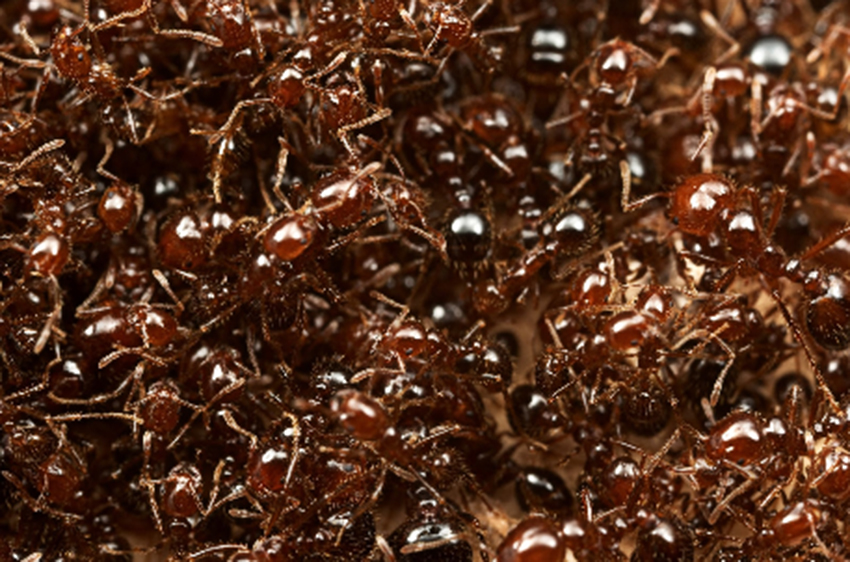In the wake of Hurricane Harvey, houses and buildings were left in ruins, forcing people out of their homes to seek shelter elsewhere. But humans weren’t the only species forced to adapt to the flooding.
Harvey also displaced Solenopsis indicts, more commonly known as the red imported fire ant, according to Lawrence Gilbert, a professor of integrative biology and the director of the Brackenridge Field Laboratory. This caused massive swaths of them to form floating colonies that surf the streets.
This ant is adapted to life in South American floodplains, and when their nests flood, worker ants move the larvae to higher ground, said Gilbert. Individual ants can float on water due to a coating of cuticular hydrophobic hydrocarbons, which are long, water-repellent chains of molecules that coat all insects’ exoskeletons. When they lock claws with each other, they are able to form the raft-like structures seen floating down Houston’s streets.
“Harvey simply caused the flood that drove thousands of colonies out of their underground nests,” Gilbert said.
These red imported fire ants are one of a few species that evolved this behavior, said Rob Plowes, a research scientist in UT’s Department of Integrative Biology. He added that most ants depend on other survival strategies such as climbing trees.
“Fire ants love floods,” said Alex Wild, a curator of entomology at UT-Austin. “I have seen smaller rafts of individual nests, but some of the pictures coming from Harvey showed massive mats of hundreds of nests — a much larger scale than I am used to seeing.”
Although these floating fire ant rafts may seem bizarre, there’s nothing humans can do but avoid them, Plowes said.
“If you are in a boat, there is little danger,” Gilbert said. “However, as soon as the ant raft hits shore (or) a floating log, they will do what we would do … climb on.”
The floating mats can pose a significant risk to people or animals in the water, according to Plowes.
“They will likely try to climb onto the person, then immediately realize it is not a tree and follow up with numerous stings,” Plowes said.
In addition, some areas have been so badly flooded that some colonies may not survive long enough to find dry ground, according to Plowes.
“In the case of Harvey, hundreds of thousands of acres were cleaned of fire ants, and I suspect many perished in the gulf,” Gilbert said.
This phenomenon will only last for as long as the floodwaters persist, because the colonies will naturally drift to higher ground and find land as water levels recede.
“All living organisms are fascinating in their own way and beautiful in the right light,” Wild said. “I suppose I’m glad that amid the destruction, a few people took time to pay attention to the ants and to appreciate that some animals have evolved a productive way to thrive amid chaos.”















